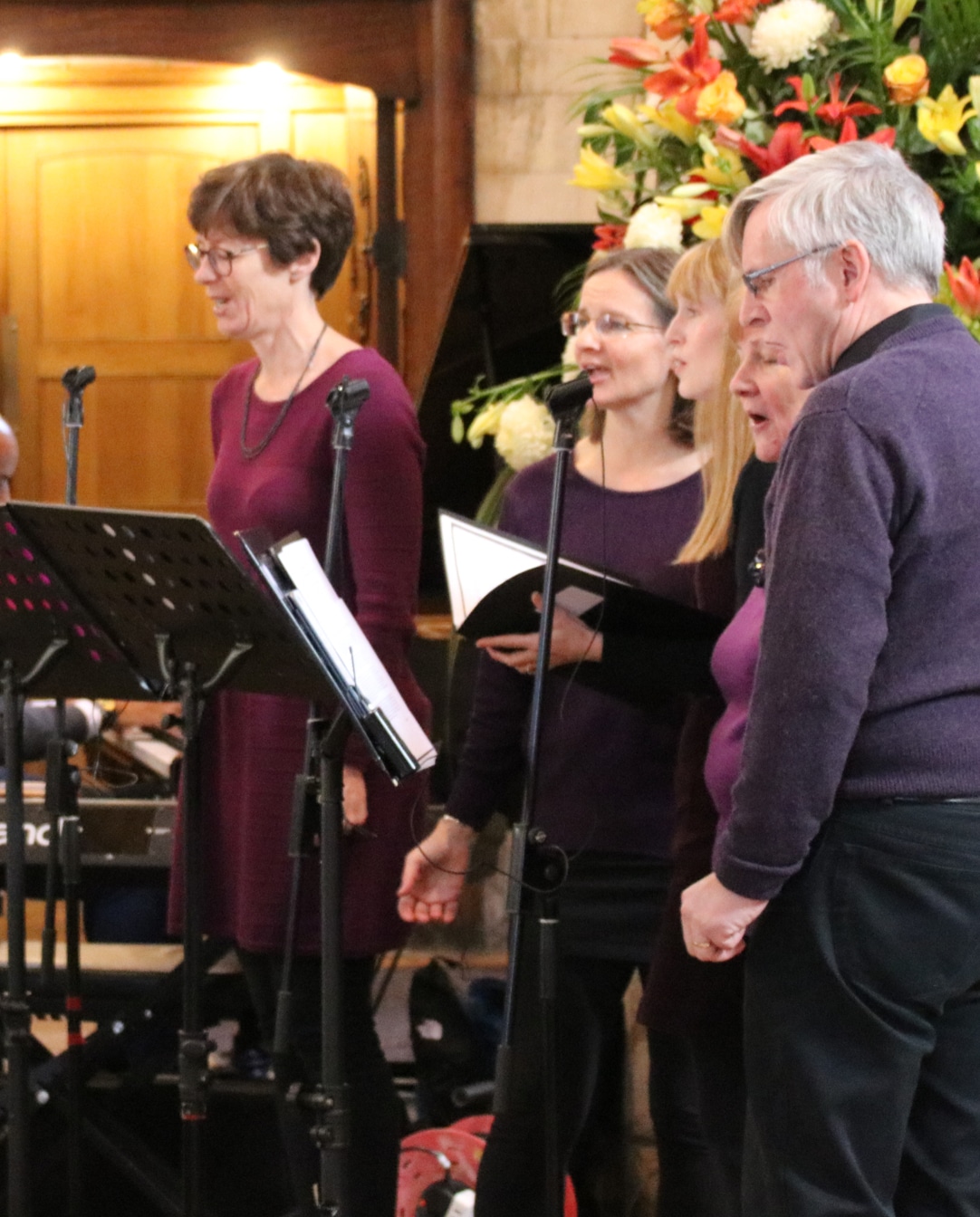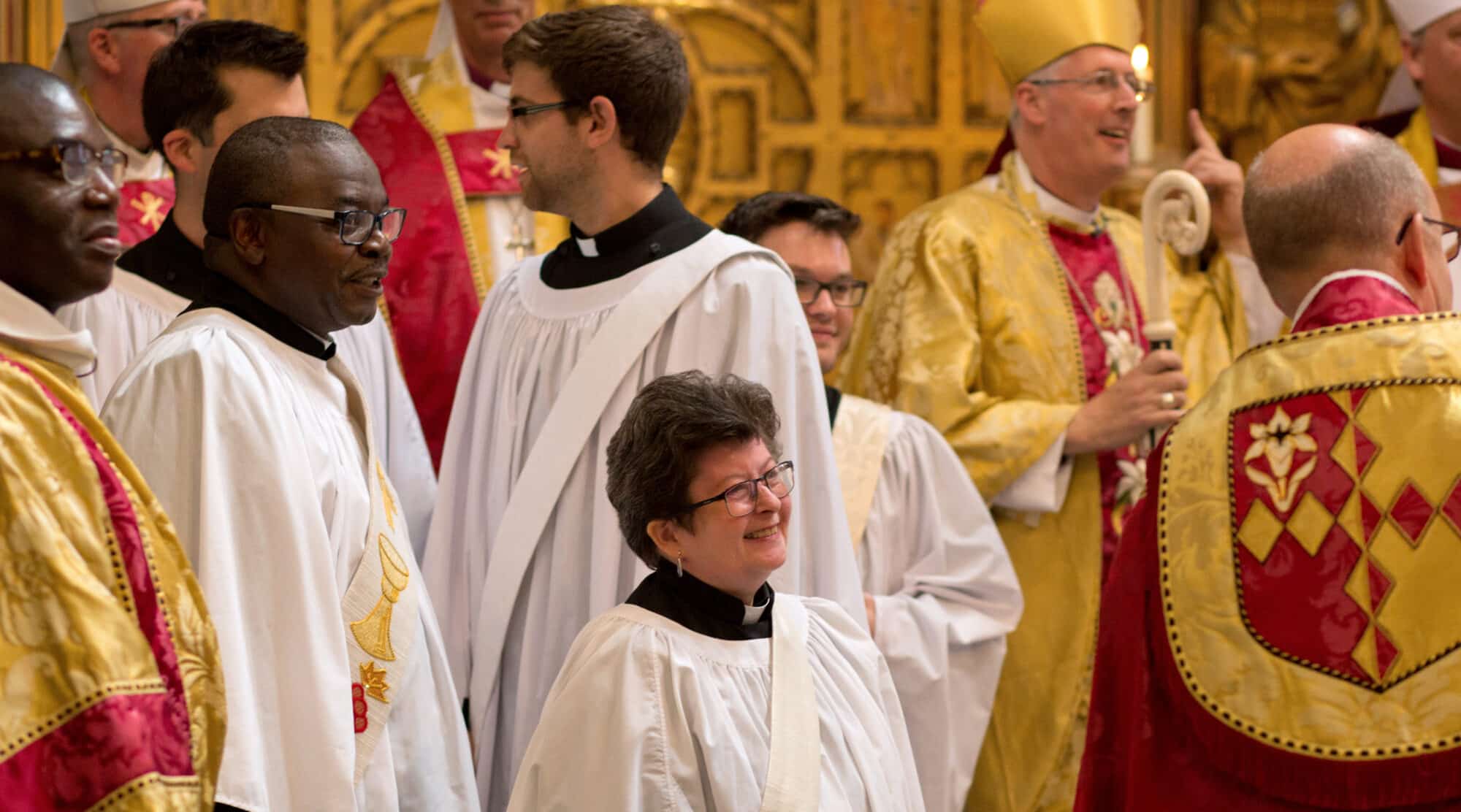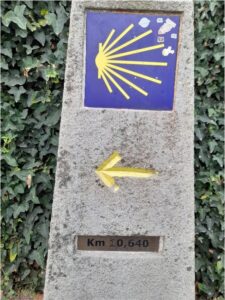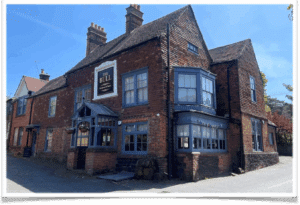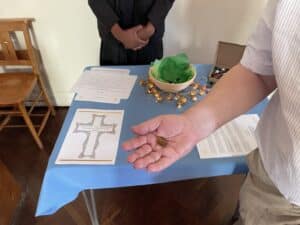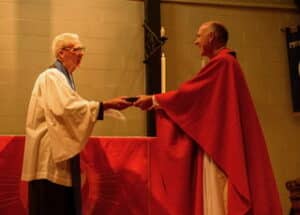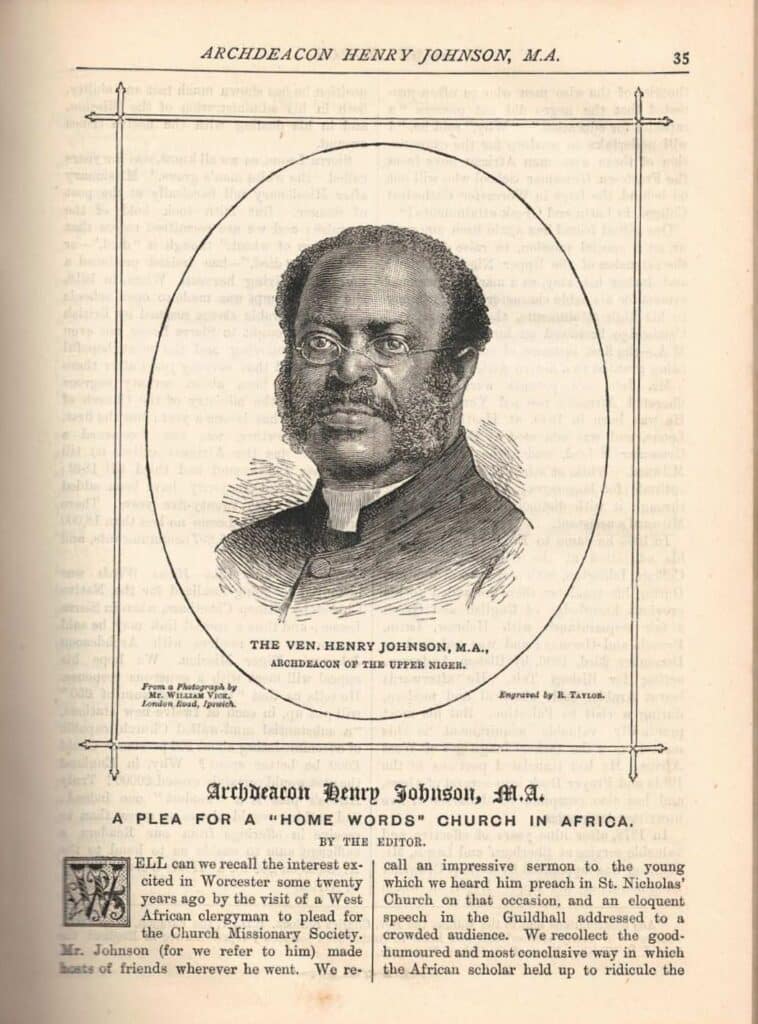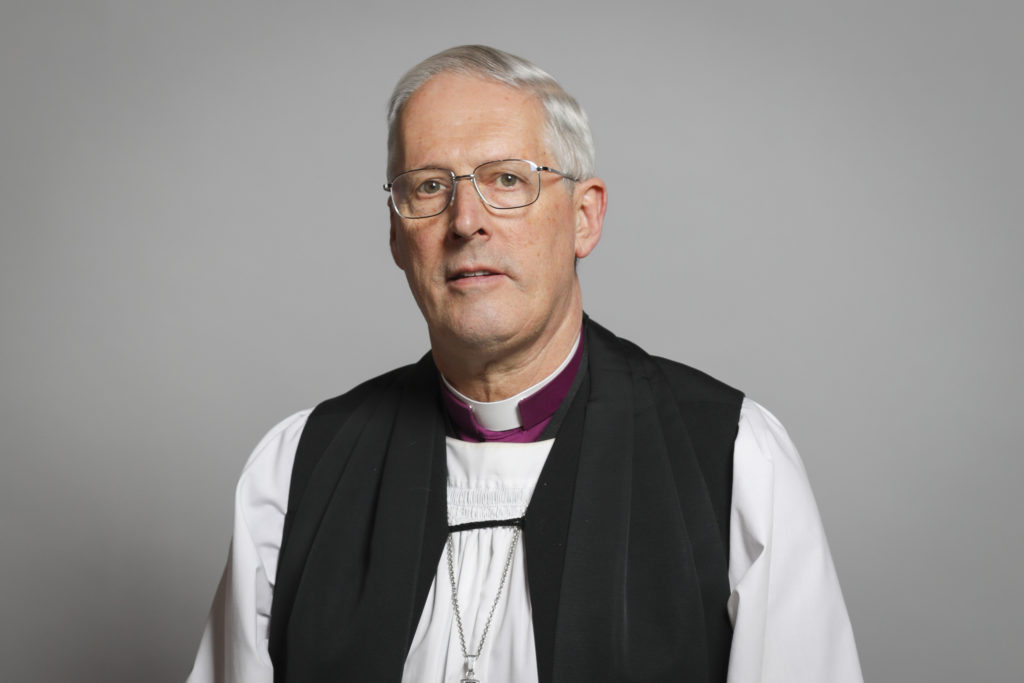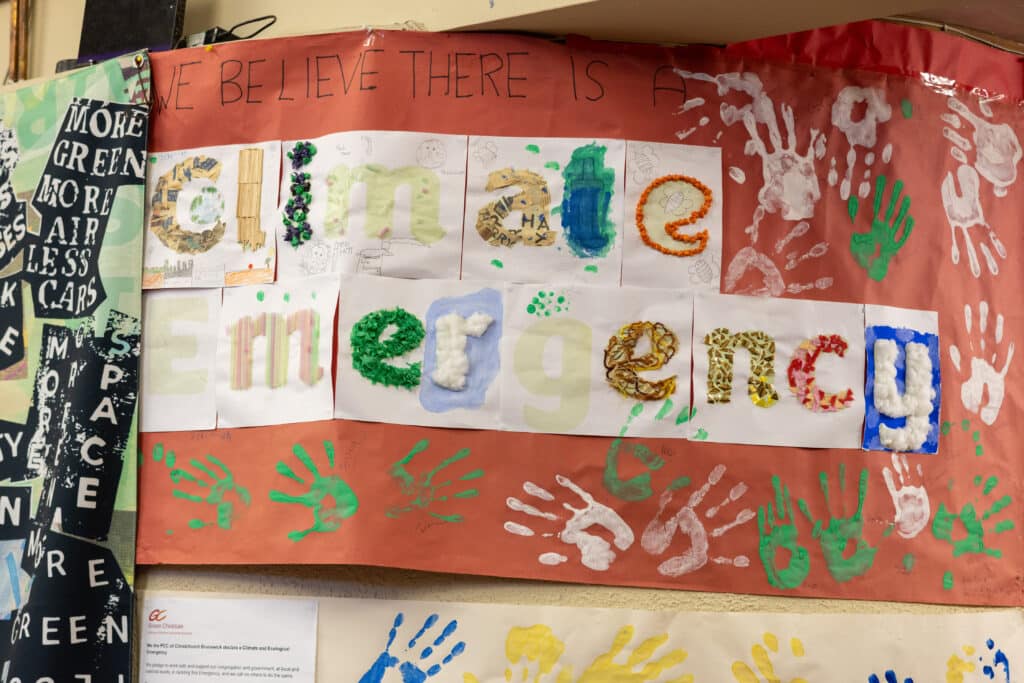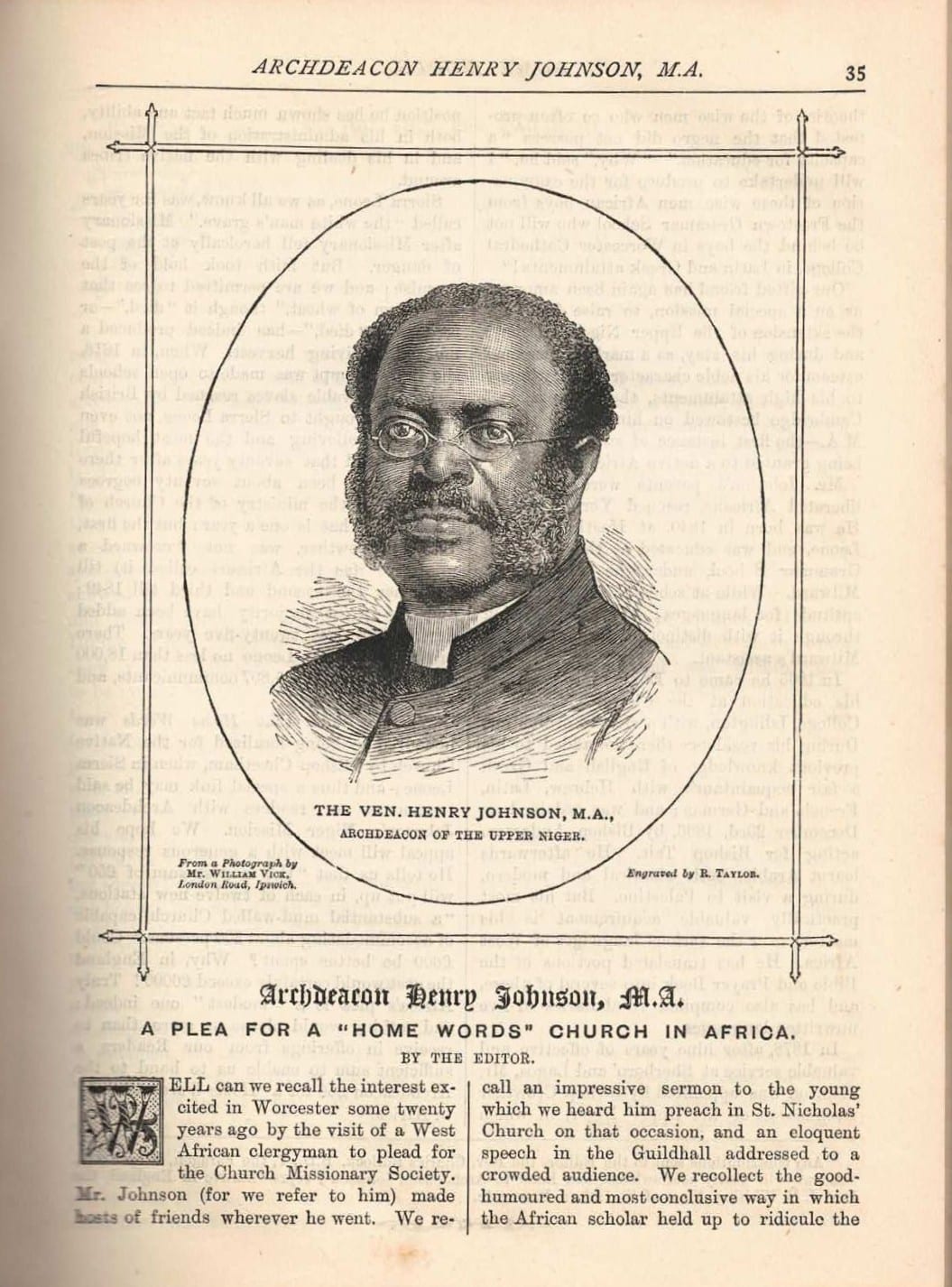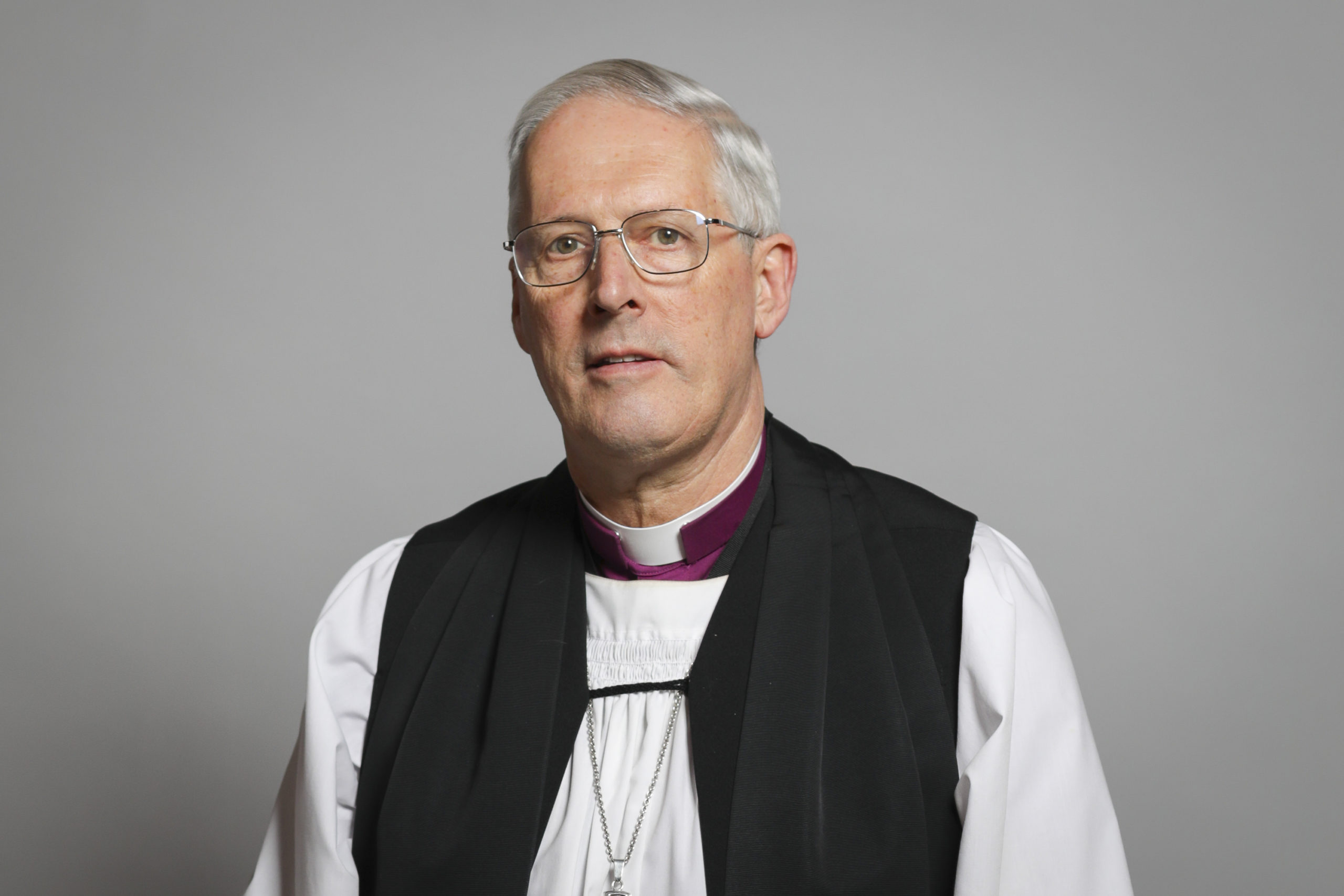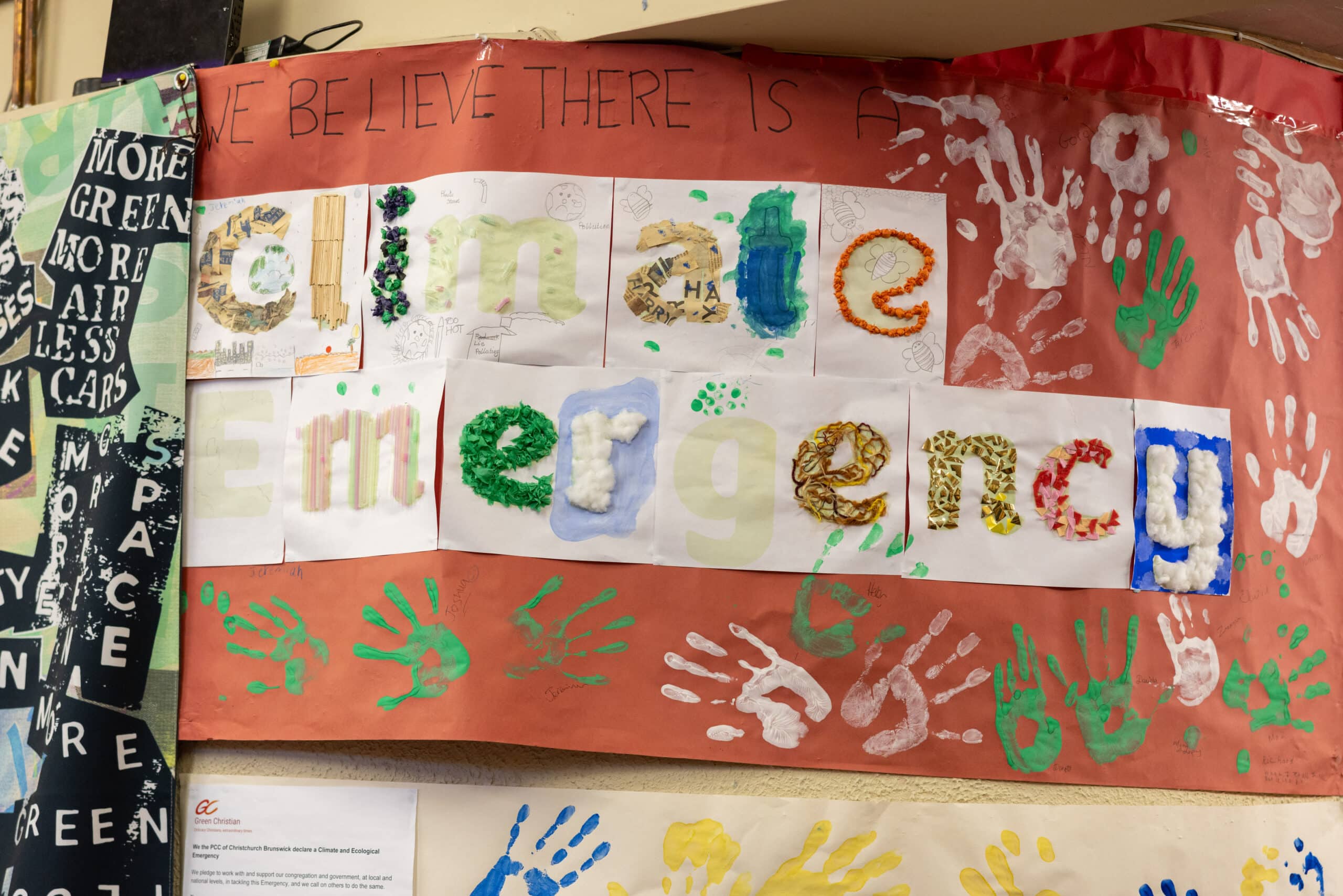On 24 May 2024, Jeanne Rathbone, of the Battersea Society Heritage Committee and author of ‘Inspiring women of Battersea’ (in which Isabella Gilmore features), welcomed a group of almost 50 people to the gardens in front of Gilmore House; the house, on a busy corner of Clapham Common, is a listed building and now comprises residential flats.
The group moved to the pavement on the Elspeth Road side of Gilmore House, where Bishop Christopher unveiled the blue plaque in honour of Isabella Gilmore, who oversaw the revival of the Deaconess Order in the Anglican Communion, and who lived and trained Deaconesses in Gilmore House from 1891 until her retirement in 1906.
The group then returned to the gardens for speeches, which begun with a few words by Jeanne: “I’m so pleased that Bishop Christopher guaranteed that we would put up a plaque to Deaconess Gilmore. It was back in 2018 when I found out that there were 17 English Heritage plaques in Battersea, but they were all to men, not one to a woman. So something had to change! I have been very busy and this is number 12 to a woman. It’s great to be getting these plaques up to women; people just love them, finding out what was here before.”
Bishop Christopher expressed his thanks to Jeanne for her work to get the plaque erected, acknowledging that it wouldn’t have happened without her, described the long, and at times challenging, journey for women to be ordained, and read an extract of Isabella’s words from Clare Edwards’ book, ‘Isabella Gilmore: Forerunner of Today’s Women Parish Priests’.
Bishop Christopher continued: “I also want to pay tribute to the last warden, and Head Deaconess, who presided here, Ann Gurney. When I was in Stepney as Team Rector, the year before the ordination of women as priests, one of my colleagues, Gill Ireson, said to me ‘If the church allows me to go forward, you need to know I will go forward’. Many years earlier, here at Gilmore House, Gill had been encouraged to train to be a Deaconess by Ann Gurney and always spoke highly of her.
“Ann was born in 1927. Amazingly, at the age of only 32, she became the Principal here for the last 11 years of this house, which closed in 1970. She then became the Bishop’s Adviser for Lay Ministry and retired from that in the year she was ordained Deacon. She was ordained into the priesthood and continued to serve in the parish of Holy Trinity, Eltham, until her retirement in 2017 at the age of 90. So we remember the amazing Ann as an example of the many whom we should remember, and give thanks today for those who have gone before us.”
Ann Gurney was one of the 78 women who were first ordained into the priesthood in Southwark Diocese in 1994. On her retirement, Bishop Christopher presented Ann with the Lancelot Andrewes medal in recognition of her ‘Godly services and Zeal for the Gospel, in this our Diocese’. She died in February 2021.
Two days after the General Election had been called, Marsha De Cordova, MP for Battersea, made time to join the unveiling ceremony. She begun by paying tribute to Jeanne’s “steadfast work” in Battersea and continued: “This is the 11th plaque I have unveiled to women in Battersea. When I was reading the notes that Jeanne shared with me, what was so apparent was her spirit of service, wanting to serve not just the poor, where she did incredible work as a nurse, but also serving our saviour Jesus Christ. We can see the fruits of her work that she did in this very house with Deaconesses, training and supporting women. Knowing our history is so important; Battersea has a proud history of trailblazing women and it is wonderful to have Isabella Gilmour represented and recognised here.”
Revd Esther Foss, the Southwark Diocese Dean of Women’s Ministry noted that 2024 was a significant year for the ministry of women, being 80 years since the first woman was ordained within the Anglican Communion, 30 years since the first ordination of women priests, and 10 years since the first woman was ordained to the episcopate.
Esther continued: “Bishop (then Canon) Charles Gore made the point that in the early church ‘Deaconesses were regarded as an Order of the clergy’ and that though they do not yet enjoy ‘the same position in the church as that of deacons, they only wait for the church to take formal action on their behalf’. Without Isabella’s effective witness it may have waited longer still. Today we give thanks for the courage and commitment of Deaconess Isabella. It is right and good that at long last her name is attached to Gilmore House, reminding us all of her invaluable contribution to the life of Christ’s church. Thank you, Isabella, courageous woman of God.”
The Revd Ann Brodie, part of the local St Barnabas’ team, spoke: “We are here, in the parish of St Barnabas, Clapham Common. Deaconesses have historically been important in a lot of parishes in South London; St. Barnabas’, I know, has had at least one because one prepared me for confirmation here, more years ago than I care to remember! There’ll be lots of individuals in the Diocese who have had links into this whole system of the ministry of deaconesses. I long for the day when we are not called women priests anymore…that is one thing I am really looking for. We are all priests in the Church of God.”
The Revd Betsy Blatchley, of the Nine Elms Arts Ministry, and a beneficiary of the Gilmore Fund (set up from the proceeds of the sale of Gilmore House) observed how “Isabella represented the true Christian pioneer: deeply rooted in the truth and teaching of Christ but able to imagine, and envision and work passionately towards a reality, and way of being church, that was not then seen or accepted by all.”
Betsy shared her perspectives on the Gilmore Fund: “I am inspired by Isabella’s passion to work with, and on behalf of, those who society has overlooked, marginalised and stigmatised and her willingness to listen and learn from them. I was fortunate in 2010 to be a recipient of the Gilmore Fund which helped fund a sabbatical trip to the US. It felt very apt to receive that money in her name, as part of that trip I was visiting church and para-church organisations working in areas of abject poverty and deprivation in Chicago, Baltimore and Philadelphia, where I was privileged to meet women and men who were continuing that legacy of serving, following that Christlike call, often at great cost to themselves, those who society has allowed to live in poverty and deprivation.
“I was deeply grateful to have had that opportunity. I know how many female clergy and other women in ministry have benefited from that fund, not just financially but in the encouragement it gives and the affirmation it gives for our ministry. So a big thank you to Isabella Gilmore, to the fund, and to Jeannie and the Battersea Society and the Diocese of Southwark for making this a plaque a reality, and ensuring her legacy is not forgotten.”
Jeanne concluded the speeches by sharing how Isabella came to be at Gilmore House and reading of an encounter with Isabella.
“Isabella was a sister of William Morris and when she was widowed, and decided to become a nurse, all the family except for William were very against it. They were a middle-class family and were just shocked that she would work for a living. It was when she was at Guy’s hospital, after she trained, that the Bishop of Rochester approached the matron there and asked if she had a woman to start a women’s Deaconary; she immediately said Isabella.
“Isabella was very reluctant at first, it was on her agenda at that stage having just finished her training and she had just taken on the care of eight nieces and nephews because they were orphaned. But she agreed in the end and they started over in Park Hill in Clapham. But they used to walk past this house and they’d jokingly say, ‘We’d love that house’. One day there was a van, and removal men; ‘Man dead’, the removal man said. And they enquired, immediately, and the solicitor said it could not be in the name of an institution, so Isabella had to have it all done in her name, and that’s what saved it for posterity. She did some amazing work here; as a sister of William Morris, when she came into money she had a chapel built…it’s nice and simple with a Burne-Jones window and is one of the amazing houses, here in Battersea.”
Jeanne read from the Mrs. Wilhelmina Stirling’s 1956 book, ‘The Merry Wives of Battersea’, which described an encounter: “I knocked at the door of the settlement in Battersea where Deaconess Gilmore, as she was then called, resided. The door was opened by the Deaconess herself. I saw before me a picturesque, almost statuesque, figure with pronounced features. Her expression was at once stern and benevolent. She conveyed the impression of a strong personality. Moreover, in her dress and quaint snow-white cap of antiquated pattern she seemed like some resuscitation from a bygone generation, and I felt as if I were in the presence of a reincarnation of Elizabeth Fry. Her subsequent conversation enhanced that impression. ‘My dearest friends are criminals, she informed me with a smile, after welcoming me into her parlour.”
Jeanne closed her speech by reminding the group of the bas-relief of Isabella Gilmore in Southwark Cathedral.
Bishop Christopher brought the ceremony by thanking Jeanne for her work in making the plaque a reality. The women clergy present then assembled on the steps of Gilmore House for a group photograph, just as Ann Gurney and her trainees had done in 1969.
The ceremony concluded with refreshments in the garden.
Jim Grover
[email protected]
www.jimgroverphotography.com
